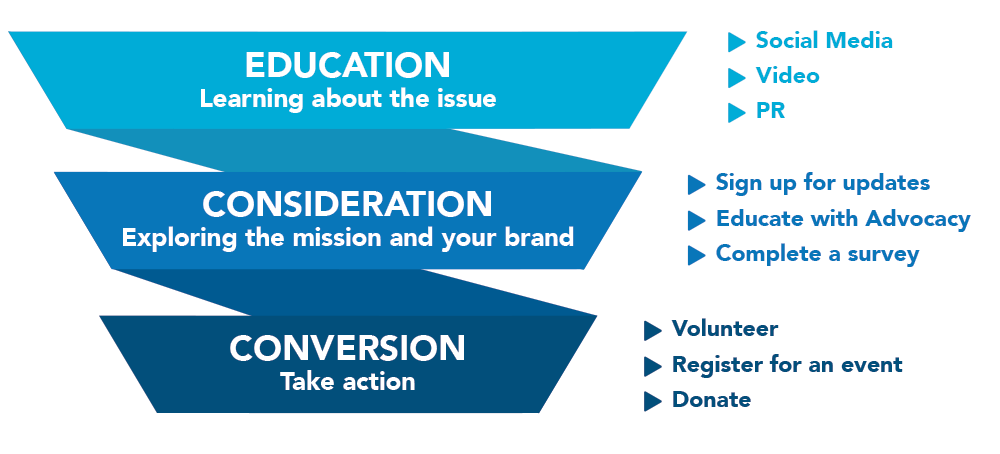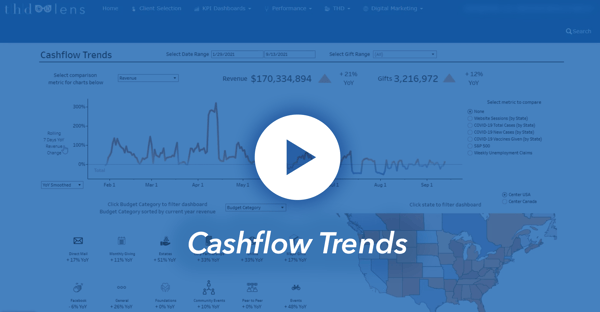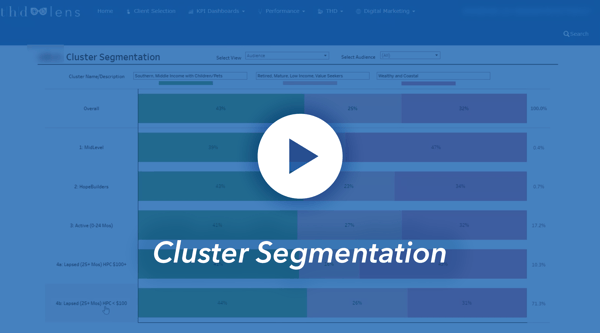Garbage in, garbage out. Or, as I like to say, G.I.G.O.
I suspect many of you reading this are familiar with this concept.
The concept is that if you input flawed information into a system, your output is also going to be flawed. It’s really a pretty simple idea.
I’m also betting that if you are familiar with the concept, there’s a good chance it’s because you’ve encountered G.I.G.O. firsthand.
The continual attention and refinement required to maintain optimal data hygiene systems is daunting. As a nonprofit leader, you are regularly evaluating which initiatives can be implemented with limited resources. And as a result, data hygiene improvements for your systems may be relegated to the bottom of the list.
It’s true that investing in proper database infrastructure and hygiene can be time consuming and expensive. However, it is essential for your long-term success. Bad data has a negative effect on donor experience, and thus on your organization’s bottom-line revenue.
How frequently do you run into strategic roadblocks because of bad or lacking data? Nonprofit decisionmakers need reliable systems for informed decision making. Without the right data, your insights could be completely wrong.
If you are suffering from bad data, I’m deeply empathetic. As the Director of Performance Insights at THD, I use data to help clients make insight-driven decisions to drive program growth. But if the data is bad, the insights are much harder to come by. That’s why I’m passionate about data hygiene and ensuring nonprofit marketers have all the tools they need to grow support for their missions.
Here are some things your team should implement now to stave off the dreaded G.I.G.O. syndrome.
Tip #1: Ensure That Your Systems Talk to One Another
We know that different departments within your organization have different uses and priorities for the data you collect, which can necessitate the need for different data solutions. We also know departments can sometimes operate in silos and, for the sake of expediency, the individual systems aren’t set up to communicate with one another. The cost? There’s no single, comprehensive source of truth that brings together all the disparate information your organization possesses about its constituents. In other words: data hell.
Beyond the headaches this might induce, a setup like this costs real dollars. Case in point, referencing a donor’s giving history (last or first gift year, giving amount, etc.) is a proven tactic that improves response rate across every channel. What if your email platform only stores digital giving, but a donor often gives offline? You are either precluded from using these performance enhancing approaches, or you are estranging donors by inaccurately reflecting their relationship with you. (“What do you mean it’s been three years since my last gift? I give every month!”) Now that’s a bad donor experience.
We get it, it’s surprisingly easy for this to happen. However, it doesn’t need to be this way. There are easy steps your team can take to set up data feeds between systems to unify multiple donor identities so each system has a fresh, accurate, and complete picture of your audience.
ID resolution can take many forms. We usually do this by using an alternate ID table that maps the IDs between systems. This way even if all the data can’t be stored in the same place, you can at least bring it all together to analyze and segment.
Tip #2: Reduce Duplicate Data
Okay, now you have your data all together, but each of your systems may have been creating unique IDs for the same people. Also, as much as we love our donors, they can be prone to human error when entering their personally identifiable information (PII). This can lead to big problems. We’ve seen a database with over 700,000 duplicate records!
So, what can you do to prevent duplicates from getting out of control? Ensuring your organization has a process to avoid duplicate data being added to your data management system isn’t as hard as it may seem. Here are three steps to take:
- Determine how you will define a unique record. Most of the time, you can use a field like email address, or some combination of fields (email address with first name, etc.).
- Define a general rule, or set of rules, to determine which record among the duplicates will become the master record. A good starting place may be to set the oldest record as the master record.
- Test to avoid negative impact. If you’re performing the merge actions automatically, test your process in a sandbox environment first to confirm that the merge process is working as expected with no negative impact on your data or the platform’s performance.
Tip #3: Consistent Source Code Structure
To predict the future, we need to see the past. Without a source code key, you will likely end up with coding that is inconsistent and difficult to follow over time. This makes tracking long-term performance much more difficult.
Consider the level of depth you want to track (program, channel, campaign, content, etc.), and then create clear documentation for the naming conventions.
If there are going to be changes to the naming convention, make sure to either (1) update old codes to match the new convention or (2) make sure these changes are added to the naming convention documentation to maintain long-term views into performance.
With this type of structure in place, getting clear channel insights and understanding how newer channels are driving growth should become a piece of cake.
Tip #4: Proper Team System Training
We have seen our partners become absolutely hamstrung by bad data entry, turning what would be pipeline leads worth millions of dollars into an unusable quagmire. Is avoiding that worth a couple of trainings?
Once you have your data system in place, it is imperative to train all team members who have access to the data about the proper ways to collect and input data. Many of your input methods are likely automated, but if you have team members setting up these automations or there are instances where data may be manually added to your CRM or data management software, training is a necessity.
The training might get some yawns and eyerolls from your team, but it keeps data from being input incorrectly, thus preventing problems down the line. Once you have trained folks, do some due diligence to ensure adoption, and also put into place a process for future due diligence. You may even want to consider how you might incentivize team members to continue prioritizing data quality long after the training is over.
Though it may seem straightforward, this might be the most important takeaway in this article. PLEASE DON’T SKIP THIS STEP!
Tip #5: Track More Than Giving Data
As donor behaviors continue to evolve and digital transformation accelerates, the journey from awareness to donation has gotten more complex than ever. Thus, understanding the full donor journey requires more than just capturing giving data.
Running a data-driven, modern fundraising program requires a nuanced understanding of the messages, tactics, and channels that help build brand loyalty. Your data tracking should include touchpoints across the entire marketing funnel:
- Education: First, they are introduced to the issue (seeing a video, PR story, etc.).
- Consideration: Next, they explore the mission and your brand (actions might include signing up for updates/signing a petition).
- Conversion: Finally, taking action with your brand (results in a donation/signing up for an event/volunteering).

Wholistic data capture might include engagement with other sources like participation in events, signing a petition, and survey responses. Having that information organized by date and source allows you to best understand donor journeys and the value derived from each pathway, including a more nuanced view of the ROI of various channels and touchpoints.
If you can’t connect their initial action with your brand (signing up for updates, signing a petition, etc.) with their downstream giving, then you’re likely underestimating the value of those top-of-funnel programs.
You can track information wholistically in your database and use services like the multichannel funnel attribution feature in Google Analytics to have micro conversion events that are tracked across all touchpoints of the user journey. This gives you visibility into not only the page a constituent converted on, but also the other touchpoints a user was exposed to before converting. To help visualize that behavior in a way that reconciles multiple sources of data, we developed the Digital Marketing Suite within THD lens, our proprietary business intelligence dashboards.
Using Better Data to Power Insight-Driven Marketing Strategies
Now that I've reviewed tips for avoiding garbage in, garbage out, I want to share more about the true potential for data to power insight-driven marketing.
Below are just two ways I've recently used data to deliver better insights and help clients shape their marketing and fundraising strategies:
-
Cluster Segmentation: After matching our client database file up against several demographic factors, we were able to pinpoint a few groups within the file that stood out as distinct concentrated segments. Leveraging this information, we can visualize within those groups several trends, including audience wealth distribution and channel giving patterns by audience, which can inform strategies moving forward.

- Cashflow Trends: With data organized by budget category, geo, and date going back several years, we can see which budget categories have been delivering both strong and weak results so far this year, along with where that has been concentrated within the country. We can then match this up against new COVID-19 cases and see that there is at least a correlation between results and the delta variant resurgence.
In my role as an analyst, nothing makes me happier than visualizations full of strategic nuggets that help translate huge amounts of data into actionable insights for our clients.
Alright, You Get All That? Now Take the Plunge:
Sorry if you find yourself in a data dumpster right now. Or even if you’ve got your data wrangled, but still aren’t making good use of it. Few things are more important than a clean and organized database. Without it, you’ll be hard-pressed to deliver audience-donor experiences and make the best strategic decisions to lead your organization forward.
If you could benefit from a partner to help you make the most of your data, our THD Analytics can flex pretty hard. Drop us a line if you want to chat, and let us know what data challenges you’re facing!






